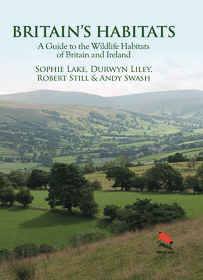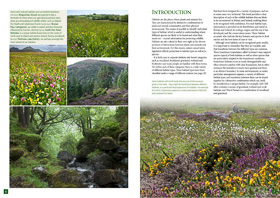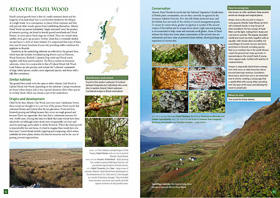Abstract: From the publisher: A lavishly illustrated, photographic, guide to our habitats and provides a comprehensive overview of the natural history and conservation landscape of Britain and Ireland. It leads the reader through all the main habitat types, with information on their characteristics, extent, geographical variation, key species, cultural importance, origins and conservation.
 |
| Front Cover |
by Sophie Lake, Durwyn Liley, Robert Still and Andy Swash
A lavishly illustrated, photographic, guide to our habitats and provides a comprehensive overview of the natural history and conservation landscape of Britain and Ireland. In essence a field guide, but also a beautiful coffee table book, it leads the reader through all the main habitat types, with information on their characteristics, extent, geographical variation, key species, cultural importance, origins and conservation.
It is the perfect companion for anyone travelling in Britain and Ireland, and essential reading for all wildlife enthusiasts, professional ecologists and landscape architects.
One of the joys of watching nature is that it often takes us to the most beautiful places. Aside from the stunning scenery we might encounter, such places have characteristics that provide the specialised environment required by the species found there (and to which they have adapted). An understanding of our fauna and flora is, therefore, inextricably linked to places they inhabit which is why I was so pleased when this latest work from the WILDGuides team came through the letterbox.
As I've travelled the British Isles in search of all of the butterfly subspecies and forms, I've also become increasingly aware of the diversity of habitats. For example, visiting the limestone outcrops of the Burren in western Ireland introduced me to one of the most unusual landscapes I've ever come across, and really hammered home just how much variety we have.
Britain's Habitats manages to bring these two elements, a recognition of different habitat types and the fauna and flora found in each, into a lavishly-presented 276 page authoritative work of the habitats of Britain and Ireland. It also comes across as a naturalists tour of the British Isles and, I have to say, is one of the most enjoyable reads I've had of late, bringing back memories of many of the sites I've visited over the years and aspirations of seeing those I've yet to encounter.
The introduction covers topics such as geology and climate, but I particularly enjoyed, and appreciated, the section on habitat classification which was a real "eye opener" for me since this classification, just like species classification, has consequences when it comes to important topics such as conservation.
 |
The book is primarily organised by the major habitat types of woodlands, scrub, heathlands, grasslands, mountains, rocky, wetlands, freshwaters, coastal habitats and "other", each starting with a map showing key areas. Each of these major elements is then organised by the detailed habitats that are described, such as the ten different types of grassland. To paraphrase the Marks and Spencer adverts, it's not just a "grassland", it's a "lowland dry acid grassland"!
Each detailed habitat has an introduction and sections on similar habitats, origins and development, conservation and what to look for (which is where fauna and flora feature heavily). Sidebars are provided for distribution and extent (including a distribution map), how to recognise and when to visit. All of these elements have thorough descriptions and ample photographs that really brings the text to life.
 |
This is one of those books that I didn't know I needed until it arrived, and now that I do have it, I consider it an indispensable reference and simply cannot put it down as I plan my trip schedule for next year. This is also the first book of its kind that I've come across and, I am sure, will become a standard text for many other nature enthusiasts looking to make sense of the environment around them. This books sits comfortably alongside other reference works such as those on butterflies, moths, birds, plants and so on and, as such, is highly recommended.
The book can be ordered here.